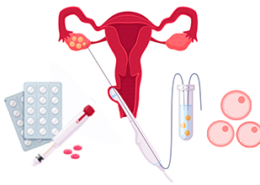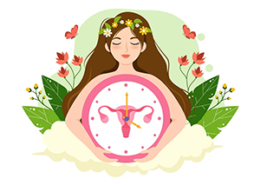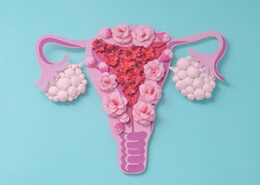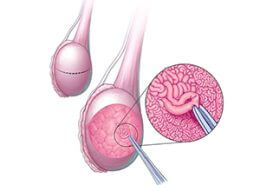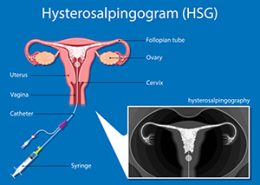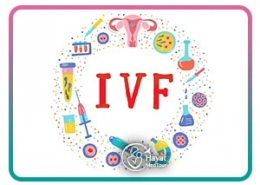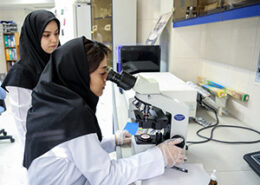Exploring Gender Selection for Family Balancing
Many parents are seeking ways to create balance in their families. Balance in the family means having children of diverse genders, allowing parents to enjoy the fulfillment of having both sons and daughters for personal or cultural reasons. Gender determination is seen as a crucial solution for concerned families. Previously, gender selection relied on non-scientific methods with high error rates. However, advancements in science now allow for fetal gender determination with 99% accuracy. In this article, we discuss the issue of choosing the gender of children and why the family thinks about this issue, the methods of gender determination, its advantages and disadvantages, and finally, we examine the right choices for gender determination.
Before starting this article, it is necessary to pay attention to the following points:
- Gender determination is a significant personal choice that parents must approach thoughtfully.
- In Iran, like in many advanced countries, fetal gender can be determined with 99% accuracy.
- Parents should know the financial costs and emotional pressures involved before proceeding with this process.
- Additionally, there are important ethical and legal considerations related to selecting a child’s gender that parents need to consider.
Why do couples think about gender selection?

It might be interesting for you to know that the motivations and reasons of families to determine the sex of the child are different. Some parents choose gender determination for personal or emotional reasons, while others do so for cultural, social, or medical reasons. Families may seek sex determination for the following reasons:
-
The desire for a balanced family
Gender imbalance can create educational and behavioral challenges, including psychological pressure on parents, differing interests and needs of children, and relationship issues between siblings. Consequently, some families seek gender determination to achieve a more balanced ratio of male to female children and reduce potential challenges.
-
Personal and emotional reasons
Some families consider determining a child’s gender due to a desire for a specific sex, often influenced by personal preferences or dreams of having children with particular characteristics. Some women may prefer having daughters to share their interests and raise them in alignment with their own experiences.
-
Cultural and social issues
In some cultures and societies, the value of having a male and a female child is different, which can put additional pressure on families and lead them to choose the gender of the child.
-
Previous experiences
Families who have a history of miscarriage due to genetic problems or any other issue prefer to choose the sex of the fetus themselves to avoid repeating this bitter experience.
-
Psychological considerations
Parents with multiple children of the same sex often desire a child of the opposite sex. Methods for determining a fetus’s gender can help these families experience the joy of having kids of different genders.
Beyond Balance: Medical Reasons for Gender Choice
-
Prevention of genetic diseases
In families that are at risk of transmitting sex-linked genetic diseases, sex determination is one of the best ways to prevent the birth of children with these types of diseases. For example, hemophilia, which is a type of blood coagulation disorder that is passed from mother to male children, and the probability of passing this disease to a female child may be reduced by choosing a female child.
-
Detection of chromosomal abnormalities
Some of these abnormalities, such as Down syndrome or Turner syndrome, occur more often in a specific gender. Therefore, families who are at risk of having a child with these types of abnormalities can choose the gender of the fetus for prevention.
Couples who intend to determine the gender of the fetus must perform the necessary tests and check all aspects in consultation with a gynecologist and a geneticist. Finally, take the best decision to get pregnant and have a healthy child, according to the consultations and examinations.
How to determine the sex of the embryo?
 The fetus’s sex at conception is determined by sex chromosomes: women have two XX chromosomes, while men have one XY chromosome. At the time of egg and sperm formation, the genetic material is halved, and only one sex chromosome remains in each egg or sperm. All eggs from a woman carry X chromosomes, while sperm from men carry either X or Y chromosomes. During fertilization, the combination of egg and sperm forms a chromosomal pair that determines the fetus’s sex.
The fetus’s sex at conception is determined by sex chromosomes: women have two XX chromosomes, while men have one XY chromosome. At the time of egg and sperm formation, the genetic material is halved, and only one sex chromosome remains in each egg or sperm. All eggs from a woman carry X chromosomes, while sperm from men carry either X or Y chromosomes. During fertilization, the combination of egg and sperm forms a chromosomal pair that determines the fetus’s sex.
When a sperm with an X chromosome fertilizes an egg with an X chromosome, the resulting embryo will have XX sex chromosomes, indicating a female fetus. Conversely, if a sperm with a Y chromosome fertilizes an X chromosome egg, the embryo will have XY sex chromosomes, indicating a male fetus.
Contrary to some cultural beliefs, it is the man’s sperm that determines the sex of the fetus, not the woman. The fetus’s gender is determined at conception and cannot be changed afterward. Therefore, couples wishing for a child of a specific gender should use gender determination methods before pregnancy to increase their chances of conceiving the desired gender.
Methods of selecting the sex of the fetus before pregnancy (preconception)
Selecting a child’s sex can be achieved through various methods, some scientifically validated and others rooted in beliefs and experiences. We will explore three of these methods: pre-implantation genetic diagnosis (PGD) with IVF, sperm sorting with IUI, and natural approaches.
Preimplantation genetic diagnosis (PGD) and IVF
Preimplantation genetic diagnosis (PGD) is the most precise and commonly used technique for determining embryo sex, achieving 99% accuracy. When combined with IVF, PGD also increases the likelihood of pregnancy compared to other methods. The sex determination using PGD during the IVF process occurs in the following steps:
1-Consultation with a doctor and conducting tests: Couples planning to use the PGD method for gender determination should first consult a gynecologist and geneticist. They must then conduct tests to assess the health and suitability of the eggs, sperm, and uterus.
2 -Ovarian stimulation: At the start of treatment, the specialist prescribes hormonal drugs to stimulate the ovaries to produce more eggs. This phase may last up to two weeks, during which the doctor monitors egg growth through ultrasound to determine the optimal time for egg collection.
3- Collection of eggs: The specialist doctor extracts mature eggs from the ovaries in an outpatient procedure and sends them to the laboratory for fertilization with sperm.
4- Sperm collection: The wife’s sperm sample is collected and prepared for egg injection.
5- IVF fertilization: after preparing the egg and sperm, sperm is injected into the egg in a laboratory, leading to embryo formation.
6- Embryo biopsy: By the third day post-ovulation, a well-divided embryo typically contains 6 to 10 cells. Using specialized equipment, 1 to 2 cells are extracted from each embryo to analyze their chromosomes for gender determination.
7- Genetic examination: Cells taken from the fetus are analyzed to identify sex or the presence of genetic diseases.
8-Embryo selection: At this stage, embryos of the requested gender are chosen for transfer to the mother’s uterus.
9-Embryo transfer: In the final stage, healthy embryos with a specific sex are transferred to the mother’s womb to continue growing.
Usually, PGD is recommended for couples who are at risk of transmitting sex-linked genetic diseases.
Sperm sorting with IUI
Another method of sex determination is the separation of sperm carrying X and Y chromosomes before fertilization. Using this method increases the probability of forming an embryo with the desired gender, but it is not a definitive method. In this method, the sperm sample is placed in a centrifuge and rotated in the laboratory. Since X-chromosome-containing sperm are heavier, they move to the bottom due to the circular motion, and Y-chromosome-containing sperm are placed on top.
Another method of sperm sorting is checking their mobility and density. Sperms containing the Y chromosome are more mobile due to their lower weight, while sperm containing the X chromosome are denser and less mobile due to their greater weight. In addition, by sorting the sperm, abnormal and weak sperm are identified and removed from the sample, which increases the chances of forming a high-quality embryo.
After sorting the sperm and dividing them into two separate groups, they are prepared for fertilization with the egg. The IUI method is typically employed at this stage to create an embryo. IUI is a minimally invasive, outpatient procedure that is less expensive, though it has lower success rates.
Determining the sex of the fetus with IUI is done in the following steps:
1- Ovulation stimulation: The doctor prescribes medication to increase egg production and control their release. An ultrasound will be performed to pinpoint the exact time of ovulation during this process.
2- Sperm sorting: The sperm sample is washed and then separated into two groups based on X and Y chromosomes using specialized techniques.
3- Sperm injection into the uterus: At the time of ovulation, the separated sperm are injected into the uterus using a special device so that the sperm and egg are fertilized inside the woman’s body and an embryo is formed.
Sperm sorting combined with IUI enhances the chances of creating an embryo of a desired sex, but it is less accurate than the PGD method and may not achieve the desired outcome.
It is interesting to know that sperm sorting is frequently employed in the PGD sex determination method. This technique allows for the selection of sperm more likely to possess the desired chromosome, enhancing the chances of creating an embryo of the preferred sex. Subsequently, the PGD method removes one or two cells from the embryos to accurately confirm their gender. By integrating these two gender determination techniques, more embryos of the desired sex can be generated, thereby increasing the likelihood of pregnancy.
Natural ways to choose the gender of the embryo before pregnancy
Also, a series of natural methods to determine the sex of the child. Although these natural methods are not definitive, many women choose them for various reasons, including cost-effectiveness and convenience. It’s important to note that these methods may affect your reproductive health, so it is recommended that you consult your doctor before attempting any of them.
1- Timing of sexual intercourse
The timing of sexual intercourse can affect the sex of the fetus according to some research. Cervical secretions are thinner and more alkaline at the time of ovulation, which can help Y chromosome-carrying sperm, known to be more mobile, to move faster. This means that intercourse during ovulation increases the probability of conceiving a male embryo. On the other hand, having intercourse a few days before ovulation increases the likelihood of conceiving a female embryo. This information can help couples plan the timing of sexual intercourse based on their preference for the gender of their baby.
2-Diet
To conceive a girl, it’s advisable to increase intake of calcium and magnesium-rich foods while reducing salt and potassium. Helpful options include eggs, almonds, dairy products (milk, cheese, yogurt), and vegetables like broccoli, dark leafy greens, and spinach.
To increase the chances of having a male child, it is advisable to consume foods high in sodium and potassium, like salmon and avocado, while minimizing calcium and magnesium intake. For better results, include a variety of citrus fruits, nuts, fresh fruits and vegetables, bananas, and sweet potatoes in your diet.
For the diet to effectively influence the fetus’s sex, it should be followed for at least 3 to 4 months before pregnancy.
3- Vaginal pH change
If the vagina has an alkaline pH, the speed of movement of sperms containing the Y chromosome is higher; therefore, in an alkaline environment, the probability of forming a male fetus is higher. Since vaginal pH becomes alkaline during ovulation, intercourse at this time is recommended for those seeking a boy.
Examining the advantages and disadvantages of gender selection

Determining a child’s sex through methods like IVF and sperm sorting remains a contentious issue with varying opinions.
Some believe that using these methods is a way for couples to create balance in the family and have children of different genders. Others think that these methods raise concerns such as gender inequality among children, limited access to these methods for low-income people, and contradictions with religious and legal values.
Determining the sex of a child is a deeply personal decision that parents should carefully consider. Couples considering gender determination should first consult with specialist doctors to ensure the health and quality of eggs, sperm, and the uterus by undergoing necessary tests and samples. After understanding the pros and cons of gender determination methods, they can then choose the best method for their situation.
Choosing a valid Medical Center for gender selection
Scientific methods for gender determination are used in conjunction with IVF and IUI-assisted reproductive techniques. To accurately determine gender and improve the chances of pregnancy, treatment should be carried out in well-equipped, advanced medical centers by experienced specialists. Choosing reputable infertility treatment centers not only enhances success rates in gender determination but also mitigates potential risks associated with assisted reproductive methods.
Therefore, the first step to start the process of determining gender and creating gender balance in the family is to choose an advanced infertility treatment center and a specialist and experienced doctor. The expert doctor offers the couple the best option to determine their baby’s sex by examining the condition of the man and the woman. The doctor’s experience, along with the facilities at a well-equipped treatment center, significantly impacts the quality and success of the process. Thus, it is advisable to research various infertility treatment centers and doctors before beginning the gender determination process, ensuring you select the best treatment center and the best doctor.
The top infertility treatment centers in Iran, featuring skilled doctors, experienced staff, and advanced equipment, are the preferred choice for many couples seeking gender determination services to achieve family balance.
Why Choose Iran for Family Balancing and PGD?
If you’re considering IVF with gender selection for family balancing, Iran could be exactly what you need. Over the years, Iran has become a popular choice for couples across the region, thanks to its modern fertility clinics, skilled specialists, and advanced lab facilities. The quality of care matches that of Western countries but at much more affordable prices. What also makes Iran stand out is that gender selection is legally allowed for family balancing, giving parents more options. From expert medical support to a caring environment, Iran provides a dependable and comfortable path for families looking to fulfill their dreams.
Conclusion about Gender Selection in Iran

Some couples seek to balance their family by having children of different genders for personal, social, and cultural reasons. Couples seeking a specific child’s gender may opt for multiple pregnancies, which can be costly and pose health risks to the mother.
Today, various scientific methods exist to determine a fetus’s gender, helping families fulfill their desires. This article reviews the most effective methods of gender selection, including PGD with IVF, sperm sorting with IUI, and natural methods.
To select the desired gender for your children, explore various methods and consult a specialist for the best approach. Although the IVF and PGD methods are more expensive than other methods, they have a higher chance of pregnancy and an accuracy of nearly 99%.
If you are seeking to balance your family through IVF with gender selection in Iran, contact us for guidance on gender selection and additional information.
References:
Common questions about gender selection for family balancing
Is sex selection through IVF guaranteed?
There is no guaranteed method with 100% certainty to choose the gender of the child. Using the PGD method in the IVF process can increase the probability of having a baby with the desired gender up to 99%.
Are there any risks in gender determination?
Gender determination through PGD during IVF carries risks such as ovarian hyperstimulation syndrome (OHSS), bleeding, infection, and pelvic pain. Choosing reputable centers and experienced doctors can minimize these risks.
How much is the cost of sex selection with IVF?
The cost of sex determination with IVF in Iran varies in different centers and depends on various factors. The cost of gender determination with IVF in Iran ranges from $4,000 to $6,000.
Are there legal restrictions on gender selection in all countries?
There are legal restrictions for gender determination with different methods including PGD+IVF in other countries. For example, in countries like China and India, determining the gender of the fetus is prohibited. In contrast, in countries like Iran, America, Canada, Australia, and England, this method is legal and is performed in advanced centers.
Can sex selection help prevent genetic disorders?
Yes, Sex selection can reduce the risk of sex-linked genetic diseases such as hemophilia, autism, and Down syndrome.
What is the success rate of PGD for sex selection?
The success rate of Preimplantation Genetic Diagnosis (PGD) for sex selection is about 99% accurate in determining the embryo’s sex. When PGD is performed along with In Vitro Fertilization (IVF), the chance of pregnancy using this method is approximately 50%.

